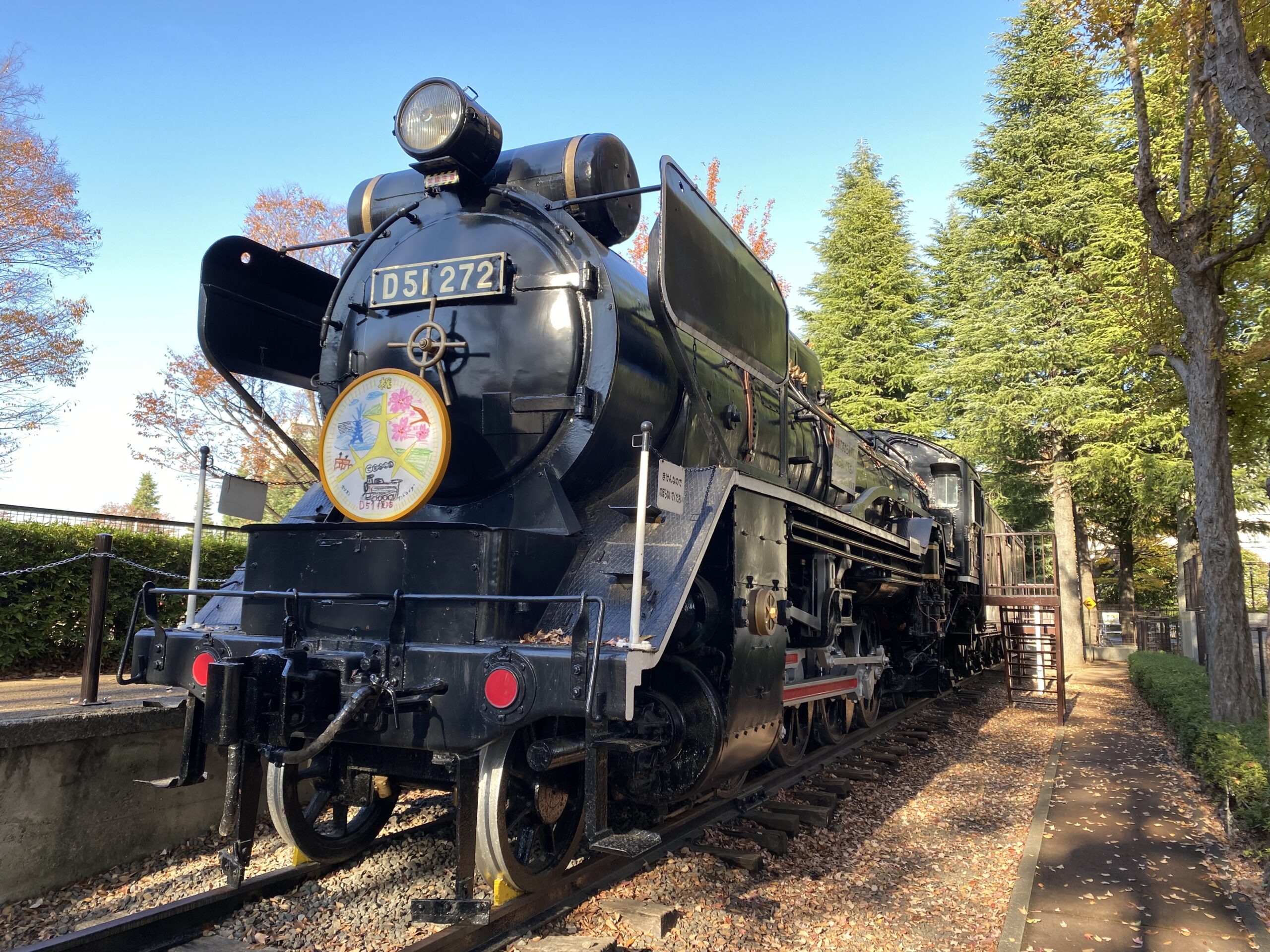There are many parks in Tokyo’s 23 wards where steam locomotives are preserved. There are probably more than 20 of them, which shows that steam locomotives have been loved by people of all generations.
In this article, we will introduce 13 parks with preserved steam locomotives that we visited in person. We will try to introduce them as evenly as possible in each district. All can be viewed free of charge.
Let’s start with two famous places. Then, I will introduce one of the newest spots.
- [Shimbashi] Shimbashi station SL Square /Class C11 locomotive
- [Ueno] National Museum of Nature and Science, Tokyo/ Class D51 locomotive
- [Toyosu] Toyosu 6-Chome Second Park/ Seibu Railway No. 4 locomotive (the JGR No. 403 locomotive)
- [Kita Ward] Asukayama Park/ Class D51 locomotive
- [Setagaya Ward] Setagaya Park /Class D51 locomotive
- 【Setagaya Ward】Okura Sports Park/ Class C57 locomotive
- 【Nakano Ward】Momijiyama Park/ Class C11 locomotive
- [Suginami Ward] Suginami Children’s Traffic Park/ Class D51 locomotive
- [Shinagawa Ward] Higashi-Shinagawa Park/ Seibu Railway No.7 locomotive
- [Ota Ward] Iriarai-Nishi Park/ Class C57 locomotive
- [Ota Ward] Haginaka Park/ Tobu Railway No.34 locomotive
- [Adachi Ward] Kita-Shikahama Park/ Class C50 locomotive
- [Itabashi Ward] Johoku Traffic Park/ Class D51 locomotive & Tobu Railway No.1 locomotive
- [Katsushika Ward] Kamichiba-Sunahara Park/ Class D51 locomotive
- See also
[Shimbashi] Shimbashi station SL Square /Class C11 locomotive
Shimbashi SL Square is probably the most famous place in Tokyo where the steam locomotive is exhibited. It is located right outside the west exit of Shimbashi Station. The steam locomotive is exhibited here because the first railway in Japan was built from here in Shimbashi to Yokohama in 1872. This Class C11 292 locomotive was installed to commemorate the 100th anniversary of the railway in Japan. It was built in 1945 and assigned to the Himeji engine depot, which worked on the Bantan Line and the Kishin Line, etc. It was repainted in 2022 and is now on display beautifully. The whistle blows three times a day at 12:00, 15:00, and 18:00.
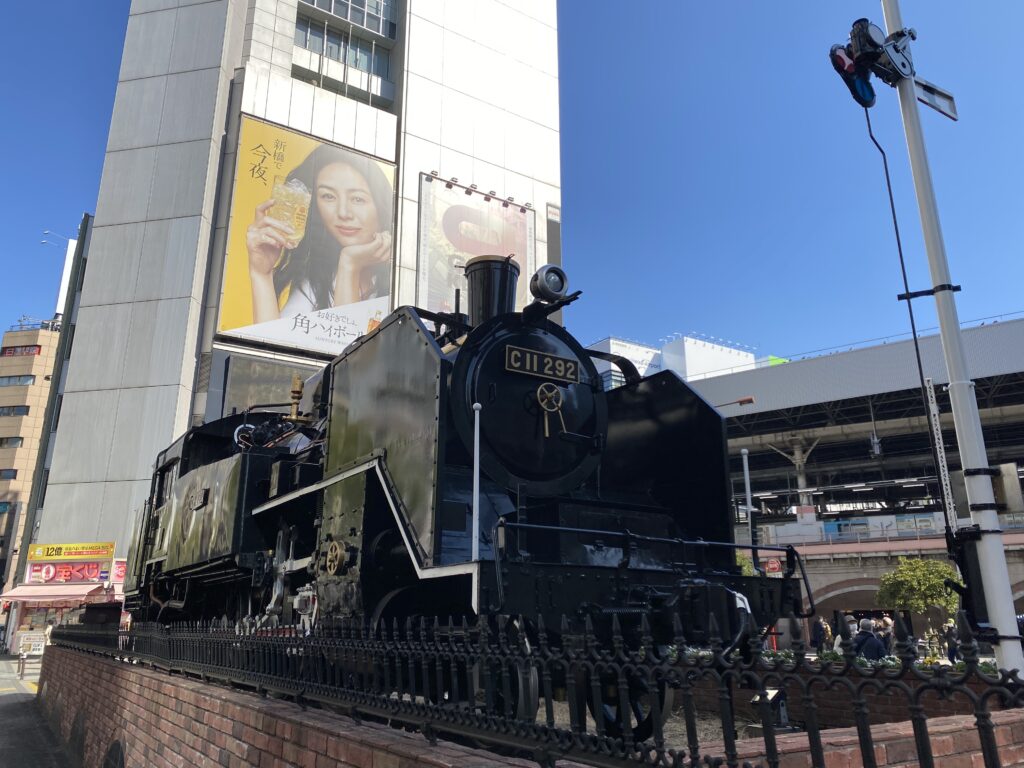
| access | the west exit of Shimbashi station on the Tokaido line, the Yamanote line, the Keihin-Tohoku line, the Yokosuka line, the Tokyo Metro Ginza line, and the Yurikamome line |
| locomotive on display | C11 292 locomotive (tank) |
[Ueno] National Museum of Nature and Science, Tokyo/ Class D51 locomotive
The steam locomotive Class D51 is on display at the National Museum of Nature and Science, Tokyo in Ueno Park, just outside of Ueno Station. Visitors do not need to enter the museum to see it; the Class D51 locomotive is the most common steam locomotive built in Japan and has been nicknamed “Degoichi”. The D51 231 locomotive on display was built in Nagano in 1939, and was used on the Tokaido and Sanyo main lines, and spent its last years at the Oiwake engine depot in Hokkaido.

| access | A 5-minute walk from Ueno station on the Yamanote line, Keihin-Tohoku line, Ueno-Tokyo line, Joban line, and the Tohoku Shinkansen A 10-minute walk from Tokyo Metro Ueno station on the Ginza line and the Hibiya line A 10-minute walk from Keisei-Ueno station on the Keisei line |
| locomotive on display | D51 231 locomotive (tender) |
[Toyosu] Toyosu 6-Chome Second Park/ Seibu Railway No. 4 locomotive (the JGR No. 403 locomotive)
A steam locomotive exhibit is also available in Toyosu, a popular tourist destination: in 2022, the Seibu Railway No. 4 locomotive (the Japanese Government Railways No. 403 locomotive) was installed near Shin-Toyosu Station, where TeamLab Planets is located. The Japanese Government Railways was the predecessor of today’s JR, and Seibu Railway is a private railway between Tokyo and Saitama. This locomotive was made in England and was one of the Class 400 built by “Nasmyth Wilson & Co. Ltd.” in Manchester, England in 1886. After coming to Japan, it was loaned by the Railway Institute to the Nippon Railways and was used on the Tohoku Main Line and Joban Line. Later, it was used on the Boso Peninsula and came to Kawagoe Railway, which is now Seibu Railway, in 1914. This exhibit was donated by Seibu Railway to commemorate the 100th anniversary of Shibaura Institute of Technology Junior and Senior High School.

Another highlight is the foundation on which the steam locomotive is installed. It is made of stones from the embankment that was used when Japan’s first railway, the Shimbashi to Yokohama line, was built. That embankment was called the “Takanawa Chikutei” and was built on the sea. It is an important heritage in the history of Japanese railways.
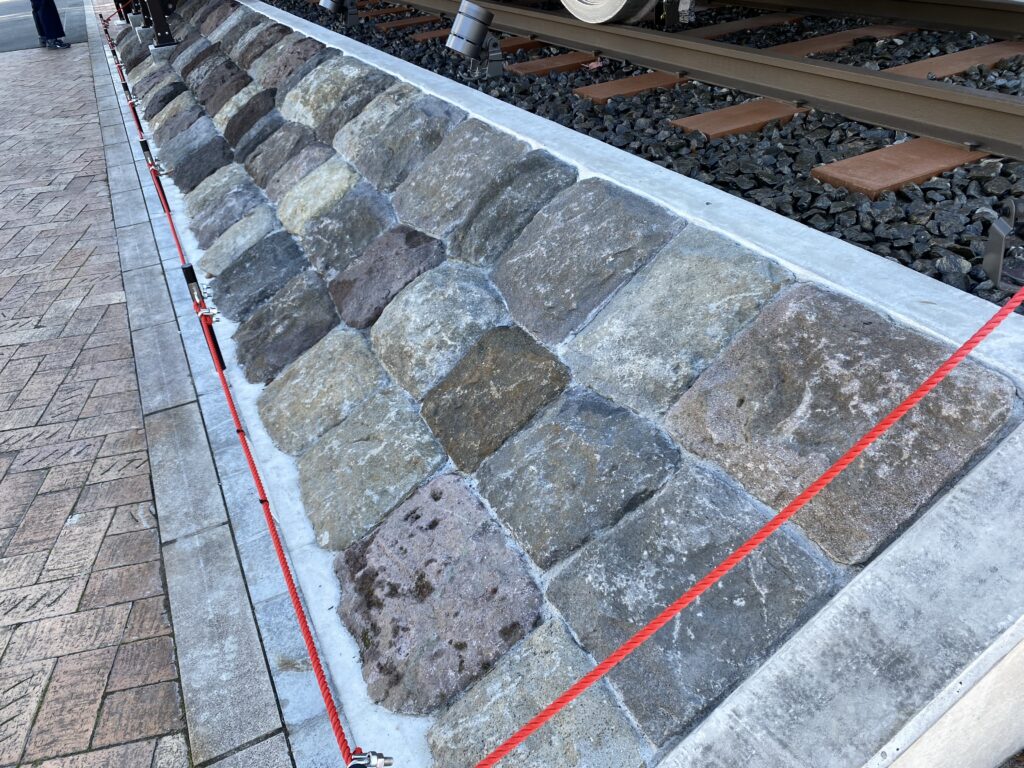
| access | 1-minute walk from the south exit of Shin-Toyosu station on the Yurikamome line A 7-minute walk from the “6b” exit of Toyosu station on the Tokyo Metro Yurakucho line |
| locomotive on display | Seibu Railway No. 4 locomotive (the JGR No. 403 locomotive) (tank) |
[Kita Ward] Asukayama Park/ Class D51 locomotive
Asukayama Park, a short walk from Oji Station in Kita Ward, has an exhibition of steam locomotives and streetcars, including Class D51 853, a steam locomotive manufactured at Takatori Works of Japan National Railways in 1943. Class D51 is a large steam locomotive for freight and is the most common steam locomotive manufactured in Japan.
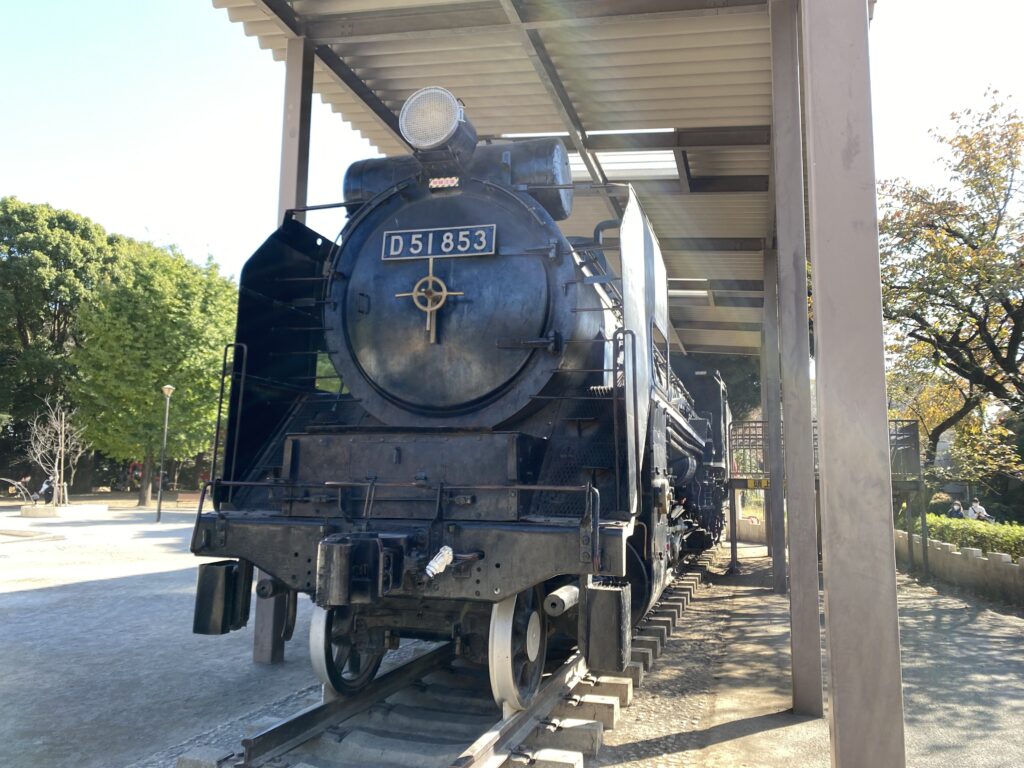
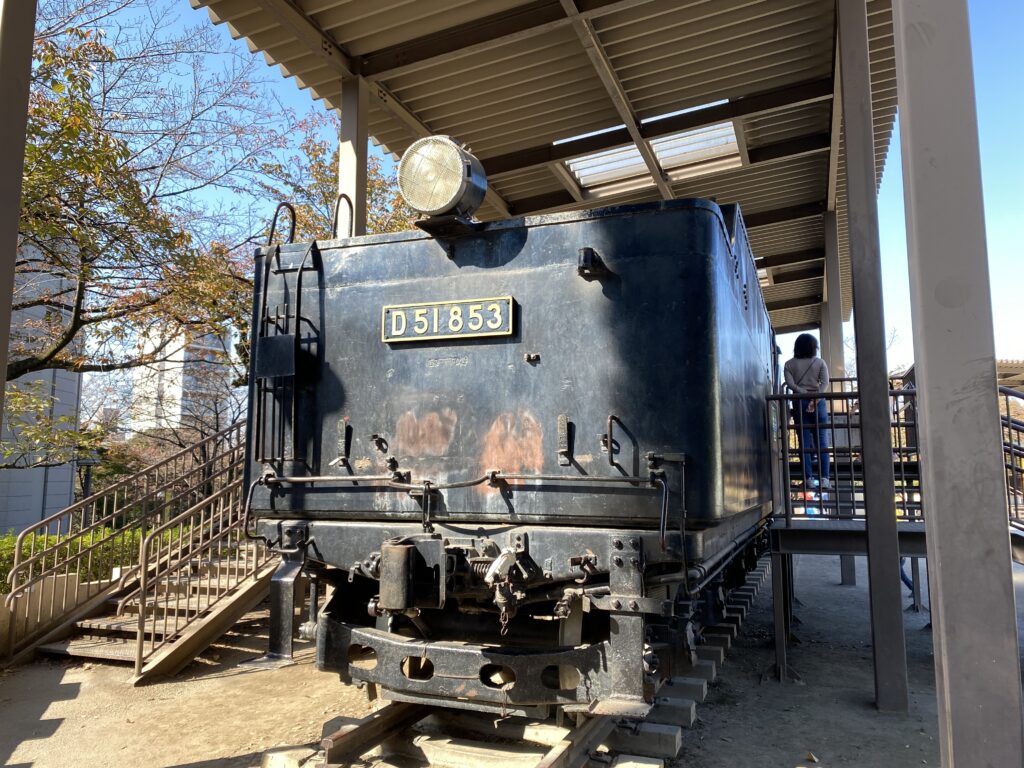
The streetcar Toden Class 6080 was running on the Toden Arakawa Line(Tokyo Sakura Tram) until 1978. The Toden Arakawa Line runs around the north side of Asukayama Park.
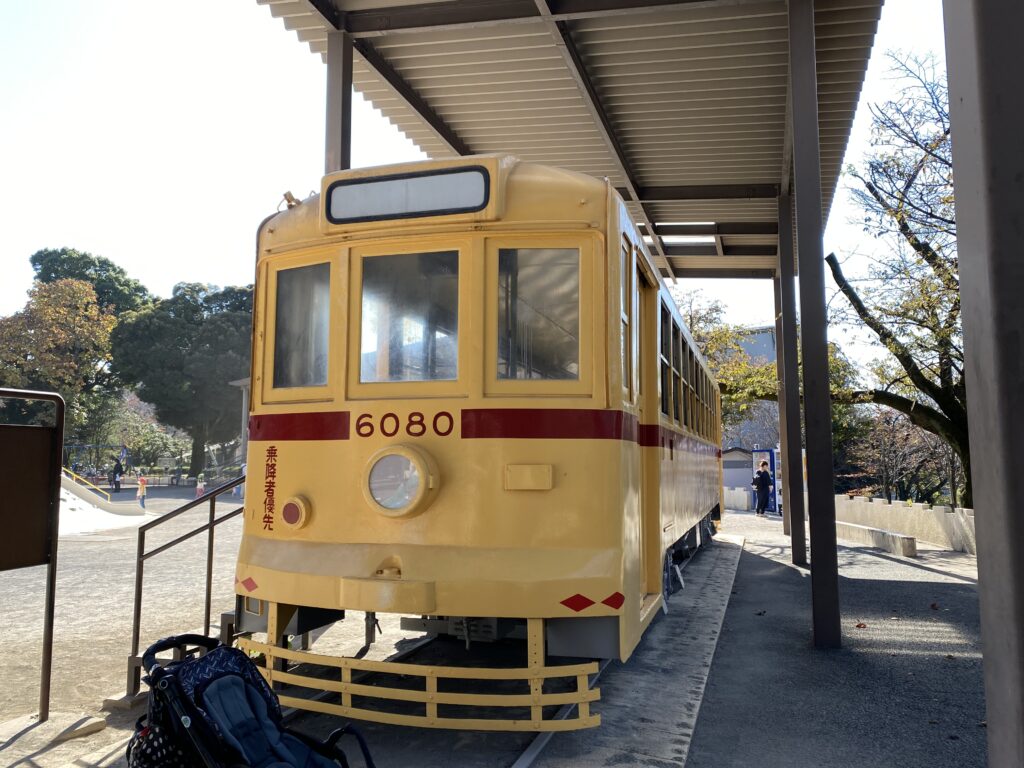
| access | A short walk from Oji Station on the JR Keihin Tohoku Line/Tokyo Metro Namboku Line A short walk from Oji-ekimae station, Tokyo Sakura Tram (Toden Arakawa Line) |
| locomotive on display | Class D51 853 locomotive (tender) |
Asukayama Park is a very enjoyable place for railway enthusiasts. From Oji Station to the park, visitors can ride the “Ascargo” self-propelled monorail for free and watch the Tokyo Sakura Tram (Toden Arakawa Line) run by. On the east side of the park, visitors can also enjoy watching the JR Keihin Tohoku Line, Shonan Shinjuku Line, and Ueno Tokyo Line, as well as the Shinkansen.
[Setagaya Ward] Setagaya Park /Class D51 locomotive
Setagaya Park in Setagaya Ward has a traffic square where the D51 272 locomotive is on display. The locomotive is well-preserved, and visitors can see the locomotive as it was in the past. On the front of the locomotive, there is a handmade head mark. This D51 was mainly used for freight transportation in Kyushu and Hiroshima and came to Setagaya Park after retiring from service at the Asa engine depot.
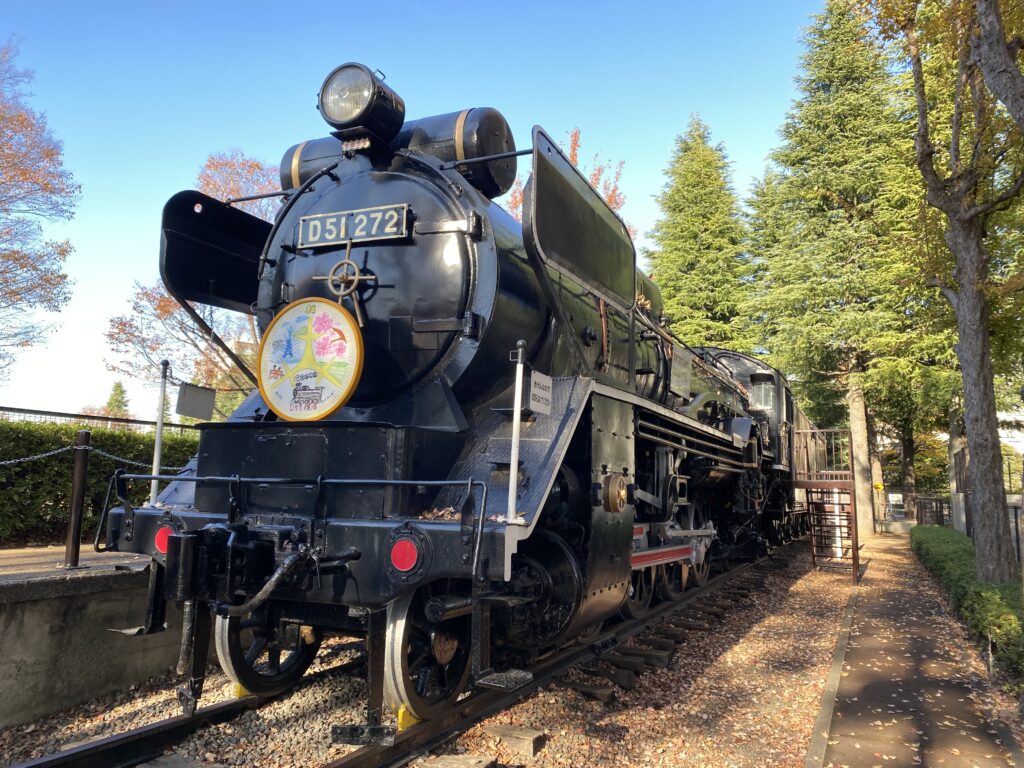
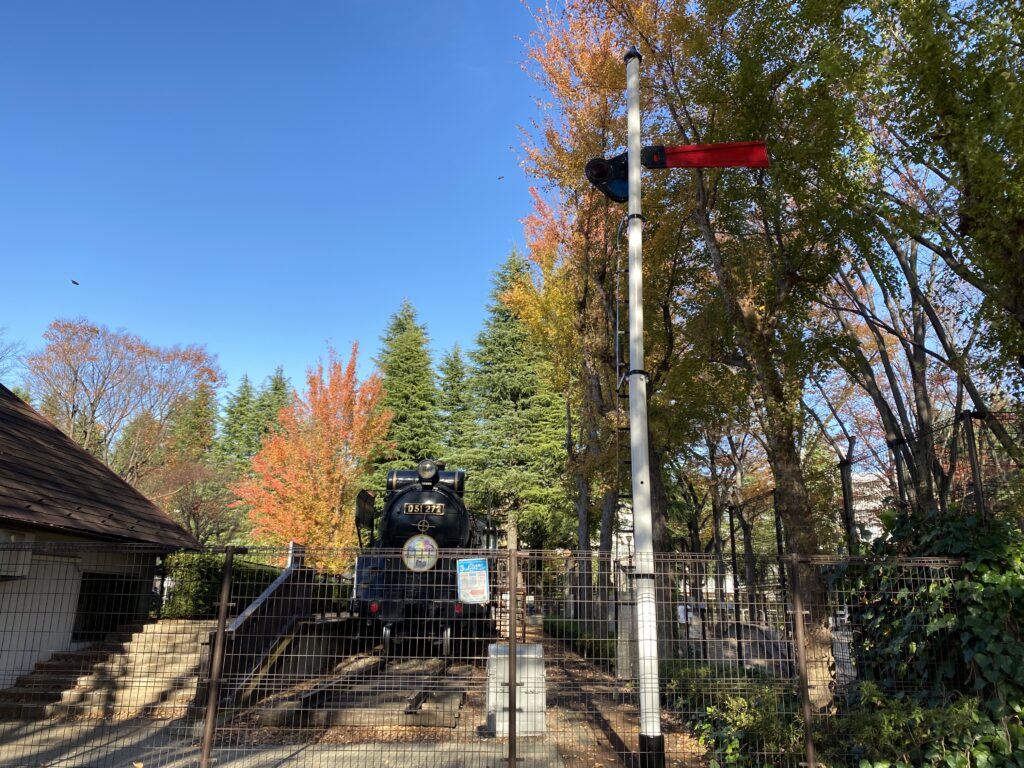
| access | 18 minutes walk from Ikejiri-Ohashi Station on the Tokyu Den-en-toshi Line 18 minutes walk from Sangenjaya Station on Tokyu Den-en-toshi Line and Tokyu Setagaya Line |
| locomotive on display | D51 272 locomotive (tender) |
It is located in the traffic square in the park and has fixed hours of use: from 9:00 to 17:00 from April to October, and from 9:00 to 16:30 from November to March. I walked there from Ikejiri-Ohashi station. It is a large park anyway, so it is a good idea to take a walk and refresh yourself.
【Setagaya Ward】Okura Sports Park/ Class C57 locomotive
Setagaya ward is a large area, so here is another one. A C57 57 locomotive is installed in Okura Sports Park, next to Kinuta Park. Class C57 was a beloved steam locomotive for passenger trains, and is also one of the most famous steam locomotives in Japan. It is affectionately known as “Shigonana”. The same type is still running today as “SL Yamaguchi” in Yamaguchi prefecture. It is noteworthy that it is equipped with a snow plow for shoveling snow. This is because C57 57 was used in Otaru, Muroran, Naebo, and Iwamizawa districts in Hokkaido.
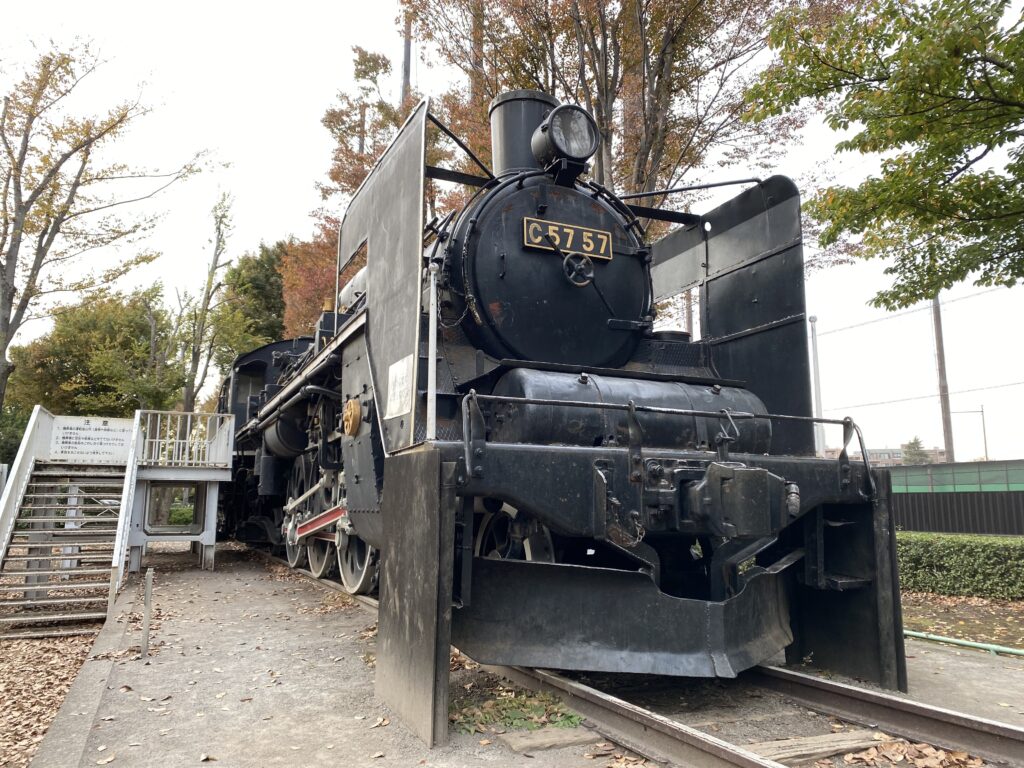
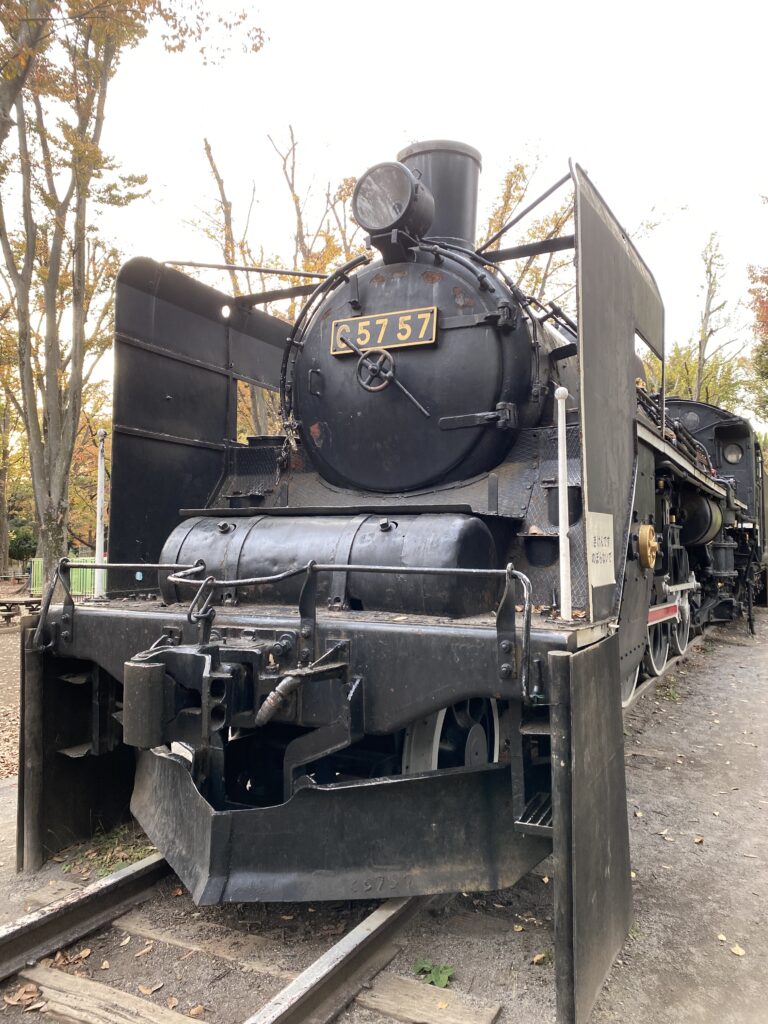
| access | 10 minutes by Tokyu bus from Seijo-Gakuenmae Station on the Odakyu Line. Get off at the “Okura Daini Undojo” bus stop. |
| locomotive on display | C57 57 locomotive (tender) |
The nearest bus stops include “Okura Daini Undojo(Okura second sports field)”. It is located next to the vast and nature-rich Kinuta Park, which is the main park with sports fields and other facilities. We took the bus from Seijo-Gakuenmae Station on the Odakyu Line. The locomotive is preserved without a roof, but it is not in bad condition and you can imagine the C57 in action in the snowy country. It is also fun to stroll in Kinuta Park.
【Nakano Ward】Momijiyama Park/ Class C11 locomotive
In Nakano Ward, a steam locomotive is on display at Momijiyama Park, an 8-minute walk from Nakano Station. This is the Class C11 368 locomotive. This is the same type of steam locomotive that is currently running on the Tobu Railway as “SL Taiju”. This C11 368 was manufactured in 1946 and last worked on the Ishinomaki Line and came to Nakano Ward.
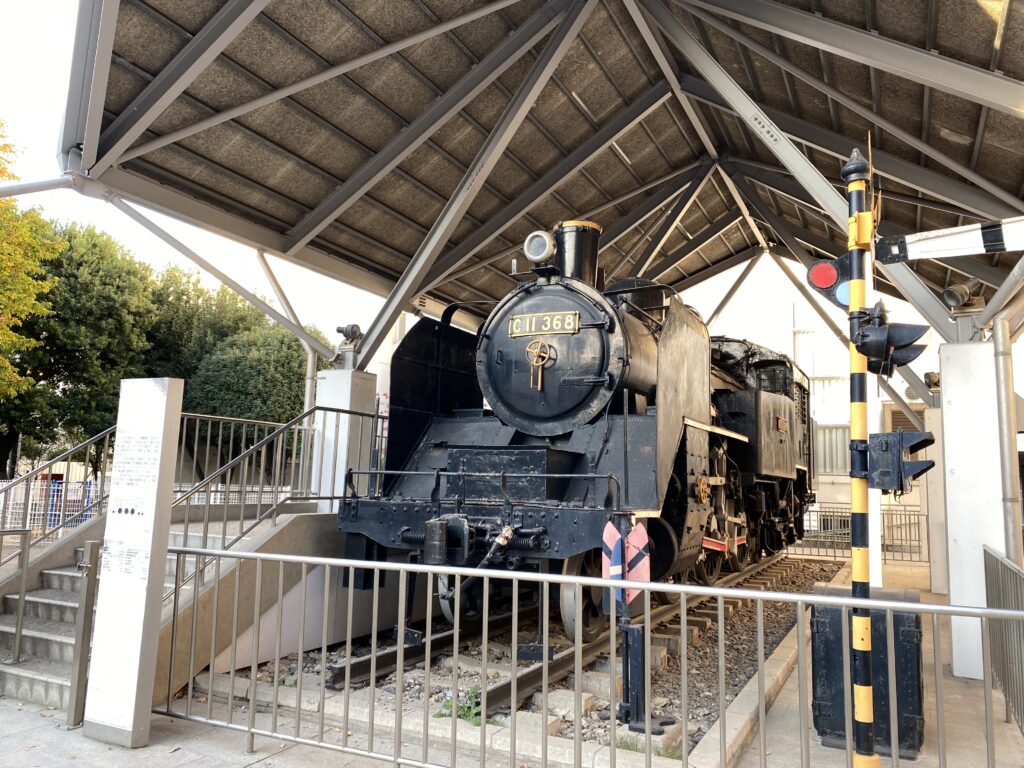
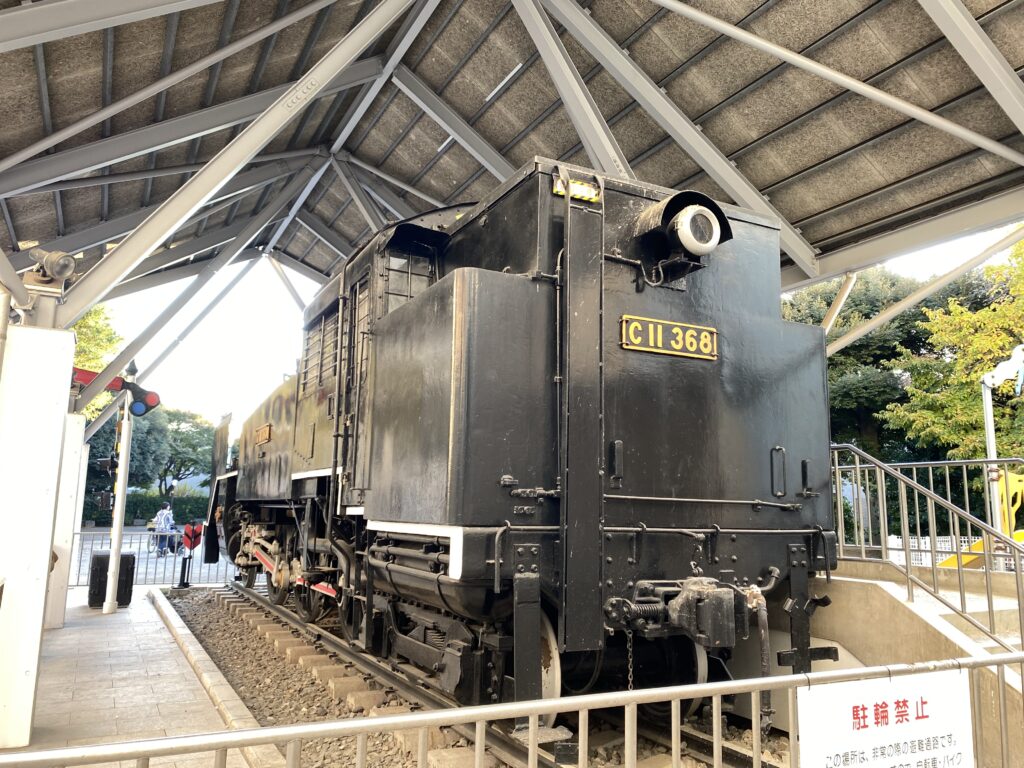
| access | 8-minute walk from Nakano station on JR Chuo line and Tokyo Metro Tozai line |
| locomotive on display | C11 368 locomotive (tank) |
Take the South Exit of Nakano Station and go straight along the railroad tracks to the left. Turn before “Nakano ZERO” and you will see it. The locomotive is well preserved with a roof, and you can take a good look at it. The steam locomotive at the SL Square in Shimbashi Station is also a Class C11.
[Suginami Ward] Suginami Children’s Traffic Park/ Class D51 locomotive
A D51 254 locomotive is on display at Suginami Children’s Traffic Park, located along the Zempukuji River in Suginami Ward. The locomotive was manufactured in 1939 and mainly used in the Kansai and Chugoku regions, and after being retired from service in Nagato, it came to Suginami Ward. Despite the lack of a roof, the locomotive is well-preserved and you can take a look at the driver’s cab.
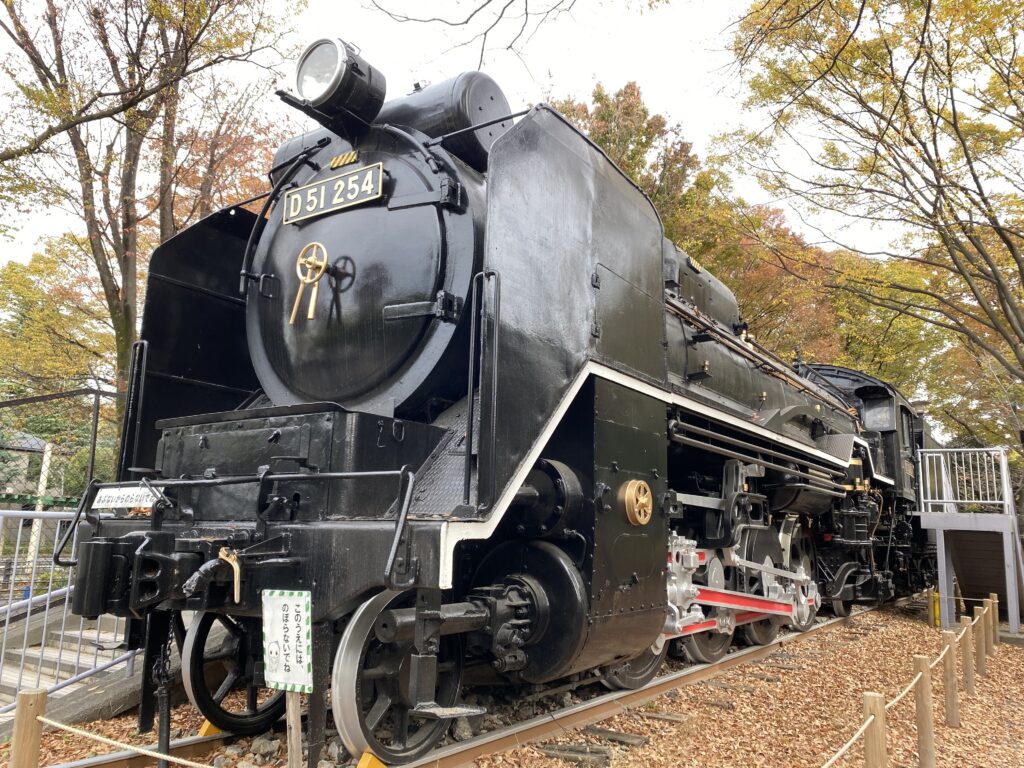
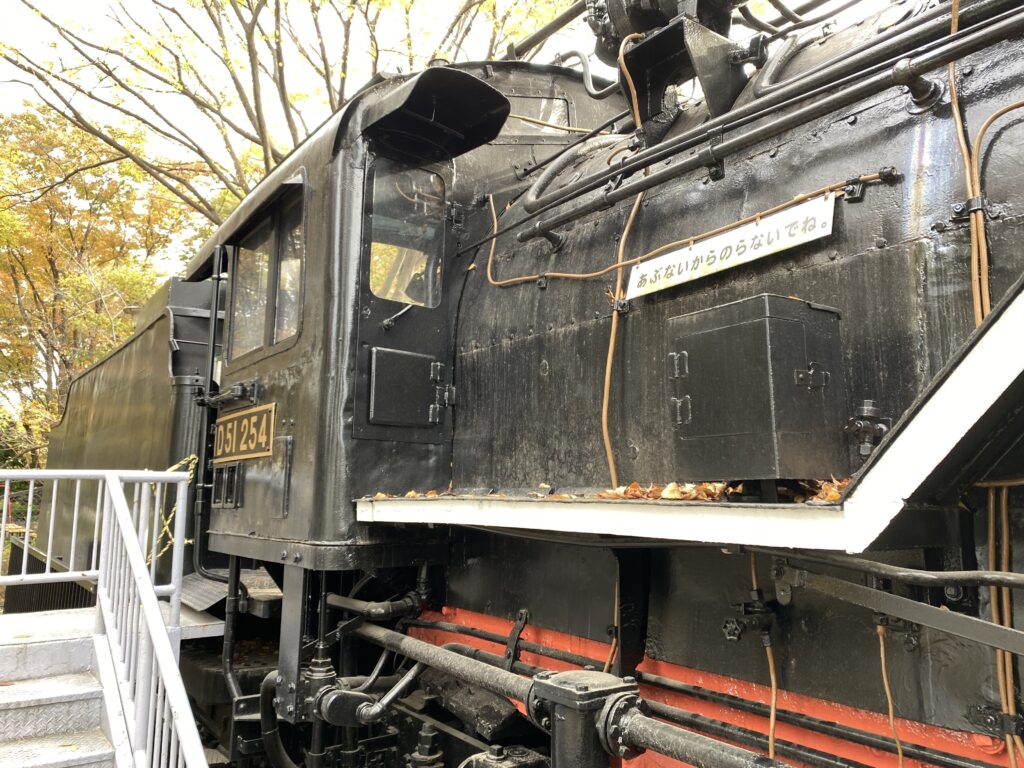
| access | A 12-minute walk from Hamadayama station on the Keio Inokashira line |
| locomotive on display | D51 254 locomotive (tender) |
Walking from Hamadayama station on the Inokashira line is a bit far, so I took a Kanto bus from Kichijoji station bound for Nakano station. The park is completely for children, but there is a green area all along the Zempukuji River that is perfect for a stroll.
[Shinagawa Ward] Higashi-Shinagawa Park/ Seibu Railway No.7 locomotive
The Seibu Railway No. 7 locomotive is on display at Higashi-Shinagawa Park in Shinagawa Ward. This steam locomotive was manufactured by the Pittsburgh Company in the U.S. in 1897 and purchased by the Hankaku Railway. After the nationalization of the railway, the locomotive was transferred to the Seibu Railway and was used on the Kawagoe Line and other lines at that time. The locomotives we have seen so far were manufactured in Japan after the beginning of the Showa period, but this Seibu Railway No. 7 locomotive is even older than those.
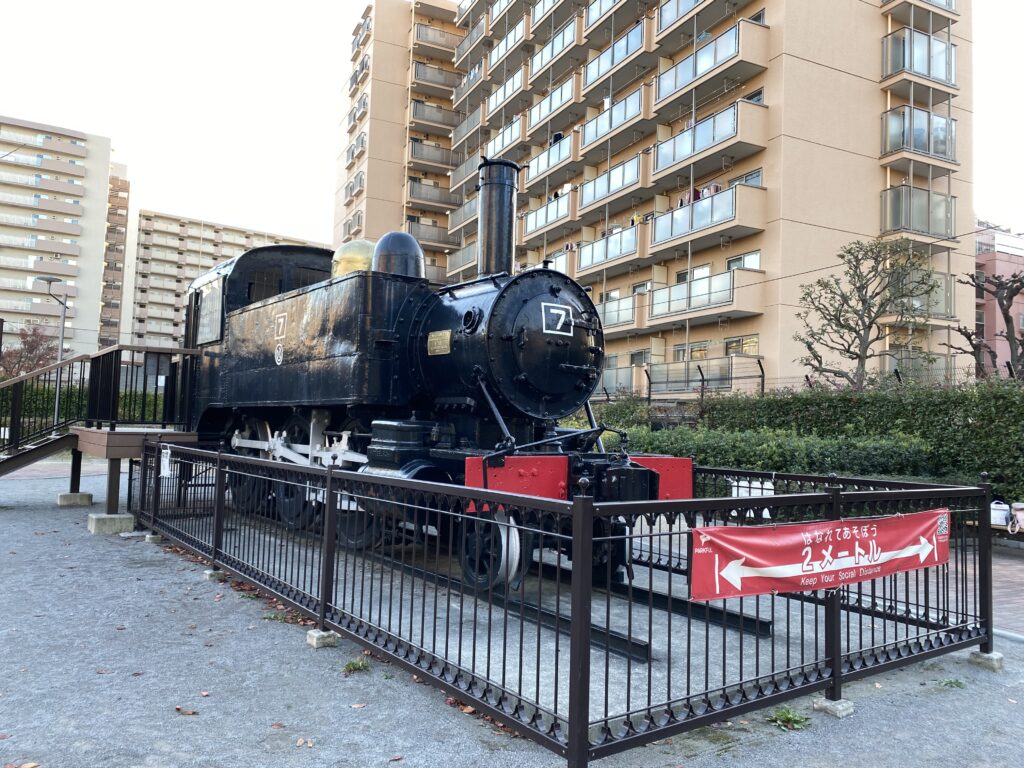

| access | An 8-minute walk from Shimbanba station on the Keikyu line |
| locomotive on display | Seibu Railway No. 7 locomotive (tank) |
Although there is no roof, it is well preserved, and it is wonderful that anyone can view such a valuable object for free. It is an 8-minute walk south of Keikyu Line Shimbamba Station. The park itself is an ordinary park in a quiet residential area. The park also contains a model of the Shinagawa Lighthouse, which was once built by a French engineer and is a sight to behold. It is recommended to enjoy the view of the old Tokaido Road, Shinagawa-juku, as well. As it is located along the Keikyu line connecting Haneda Airport and the center of Tokyo, you can drop in before flight, or during transit.
[Ota Ward] Iriarai-Nishi Park/ Class C57 locomotive
The Class C57 locomotive is on display at Iriarai-Nishi Park in Omori, Ota Ward. This Class C57 was mainly used for express and local trains in Kyushu and came to Ota Ward after it was retired from service in 1973. As its nickname “Lady” suggests, it has a sleek appearance.
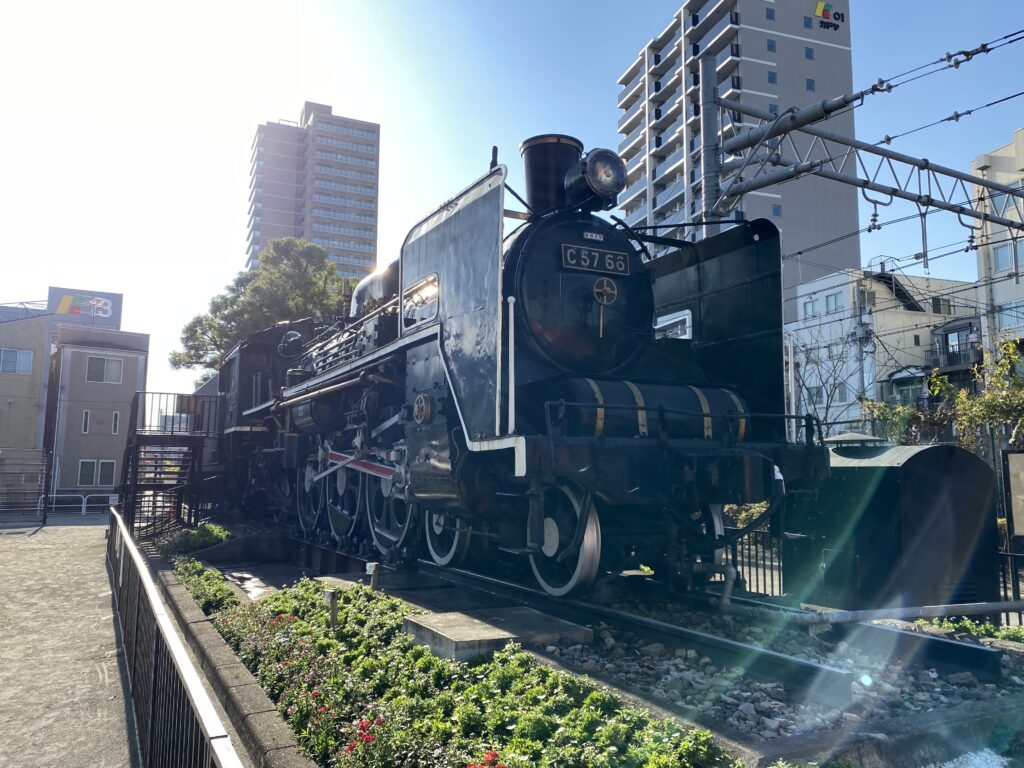
The park is located along the railway tracks and trains frequently come and go. A Tokaido Line train just passed by when we took the photos. They also have a demonstration twice a day where they spin the wheels of the locomotive and blow the whistle.
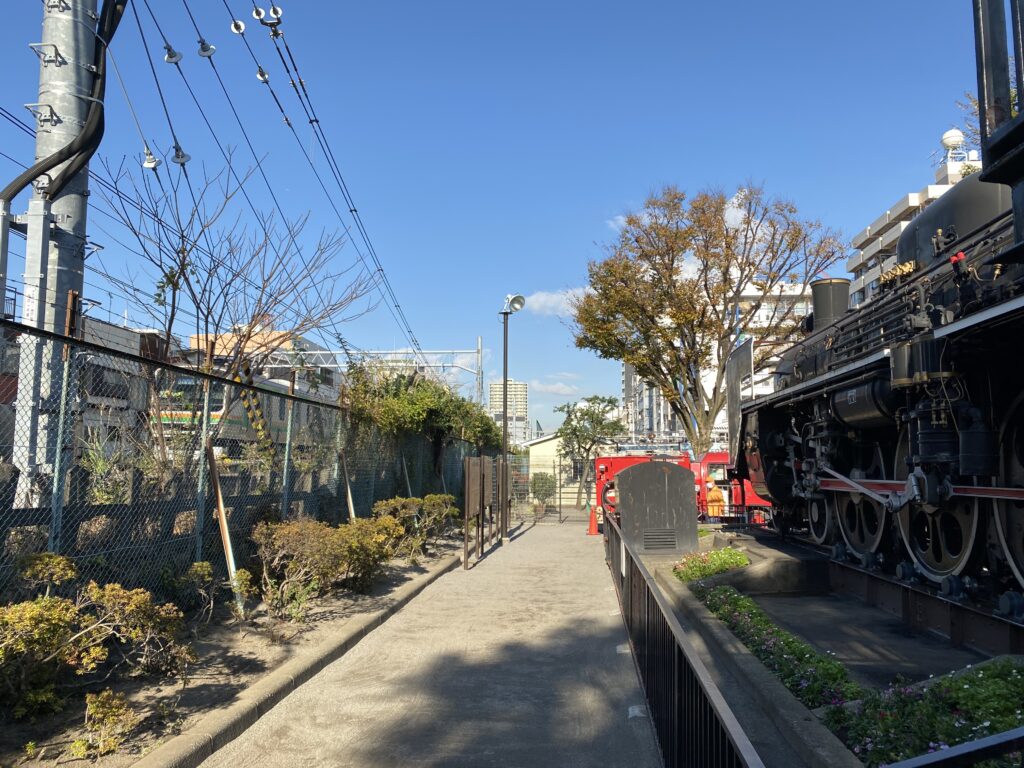
| access | A 5-minute walk from Omori station on the Keihin-Tohoku line |
| locomotive on display | C57 66 locomotive (tender) |
It is a short walk from the east exit of Omori Station through the shopping street and looks like a traffic park. A fire truck is also on display. Although it was not time for wheel spinning, we enjoyed watching the Keihin-Tohoku Line and Tokaido Line trains running next to the locomotive.
[Ota Ward] Haginaka Park/ Tobu Railway No.34 locomotive
Another locomotive from Ota Ward, the Tobu Railway No. 34 locomotive is on display at Haginaka Park, a short walk from Otorii Station on the Keikyu Line near Haneda Airport. Tobu Railway is Japan’s second largest private railway company with lines in the northern part of the Tokyo metropolitan area. 34 locomotives were built in 1914 by “Beyer, Peacock and Company” in England and were used by Tobu Railway from the beginning to pull freight trains. It was retired in 1966 and came to Ota Ward. This locomotive is the last locomotive imported from the UK.
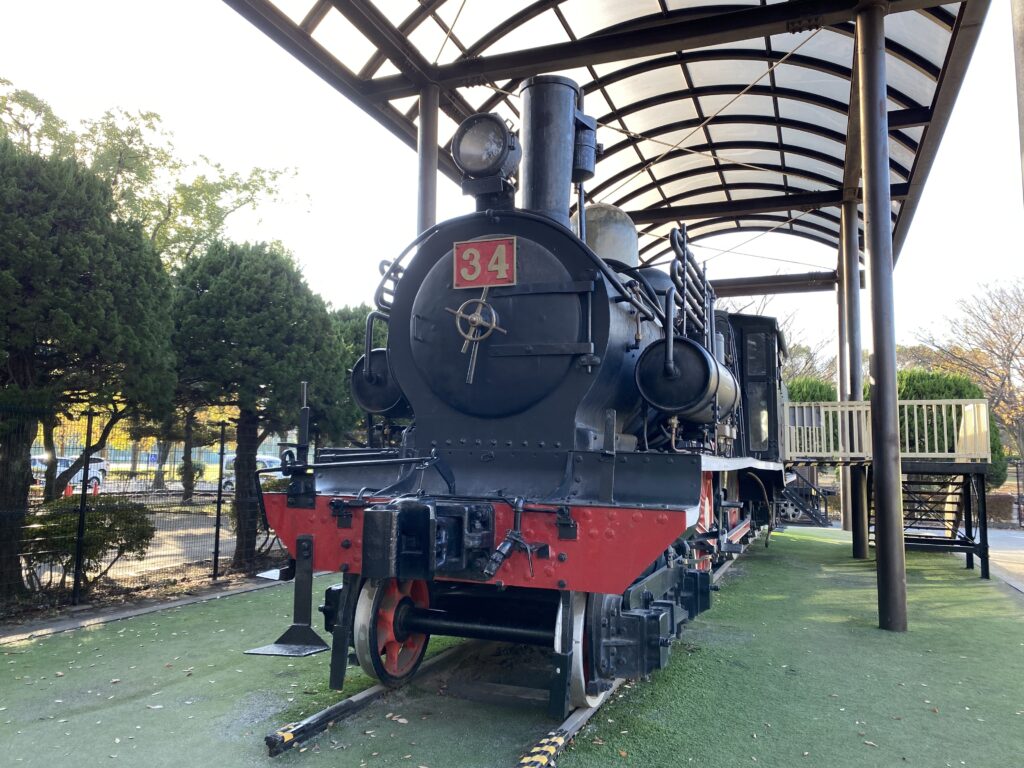
Also on display is a streetcar from the Tokyo Metropolitan Transportation Bureau, Toden Type 7000. This 7008 operated until 2012 on Tokyo Sakura Tram and was transferred to Ota Ward in 2013. The interior can also be viewed.
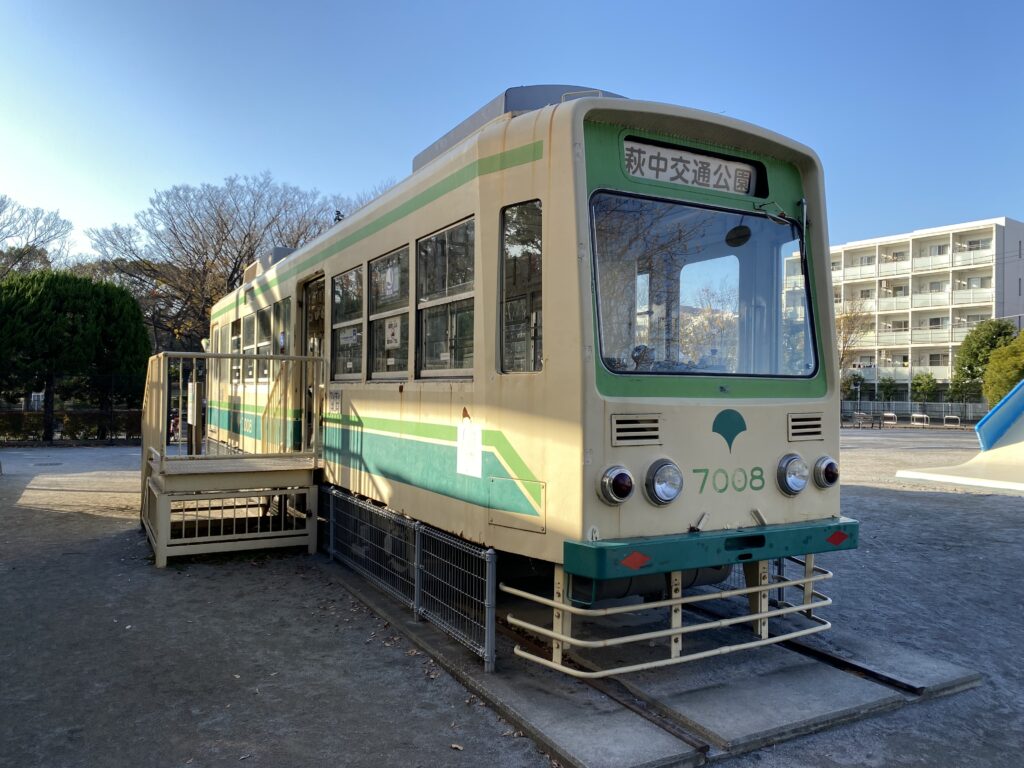
In addition, a retired track motor car(railroad speeder) is on display. A track motor car is a car used for replacement in stations and factories, and this car seems to have closed its curtain at the Ofuna factory of the Japanese national railways in its final years.

| access | A 6-minute walk from Otorii station on the Keikyu line |
| locomotive on display | Tobu Railway No.34 locomotive (tender) |
Vehicles are located on the north side of the park. The park is open from 9:00 am to 5:00 pm. Visitors can see a rare private railway steam locomotive, a streetcar, and a track motor car, making this a very impressive exhibit. Since the park is close to Tokyo Haneda Airport, it would be a good place to visit when you are in transit or before a flight.
[Adachi Ward] Kita-Shikahama Park/ Class C50 locomotive
A Class C50 75 locomotive is displayed at Kita-Shikahama Park in Shikahama, Adachi Ward. No C50 locomotives are currently in operation, and this is probably the only place in the Tokyo metropolitan area where such a display is available. It was manufactured in 1929, retired in 1971, and came to Adachi Ward. Although we do not know its history, it is believed that it was used for both passenger and freight services, and was used as a replacement in its later years.
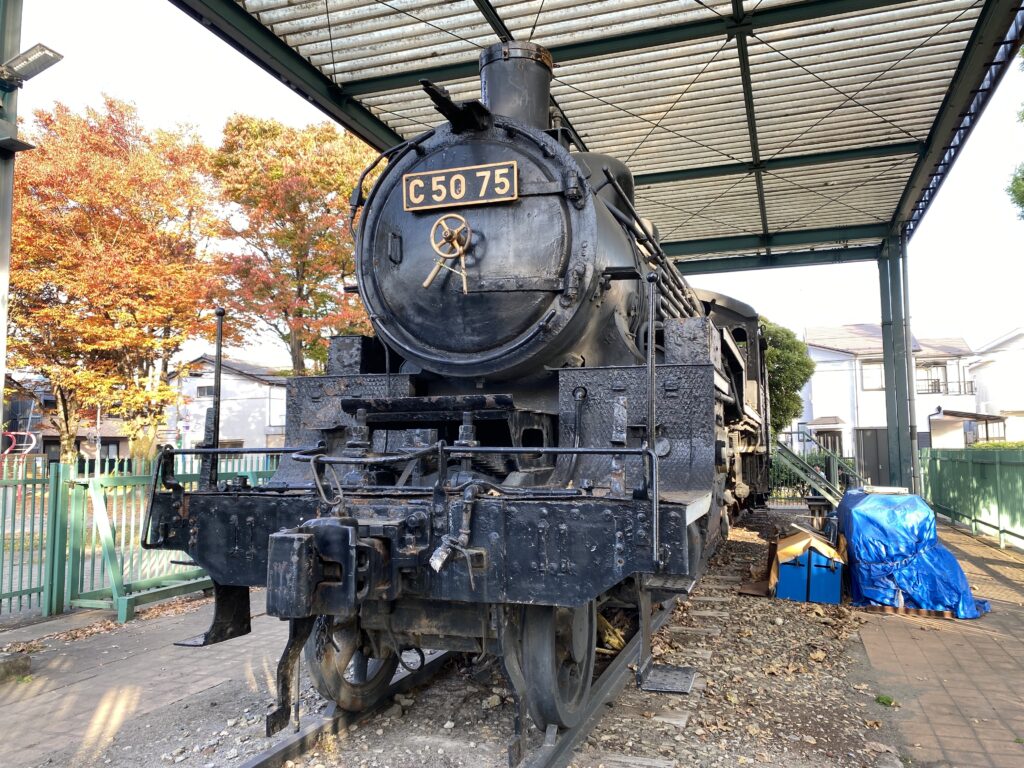

| access | take a bus from Akabane station or Nishi-arai station |
| locomotive on display | C50 75 locomotive (tender) |
It is worth a look as it is covered and in relatively good condition, as well as being considered a rare vehicle. This park is primarily a traffic park for children and a baseball field. A fire truck is also on display.
[Itabashi Ward] Johoku Traffic Park/ Class D51 locomotive & Tobu Railway No.1 locomotive
A Class D51 513 steam locomotive is on display at Johoku Traffic Park in Itabashi Ward, Tokyo. It is a short walk from Hasune Station on the Toei Mita Line. This D51 513 was built in 1940 and was mainly used for freight transportation on the Shin-Etsu and Hokuriku lines before ending its life at the Sakata engine depot. Visitors can imagine this locomotive running in the northern part of Japan.
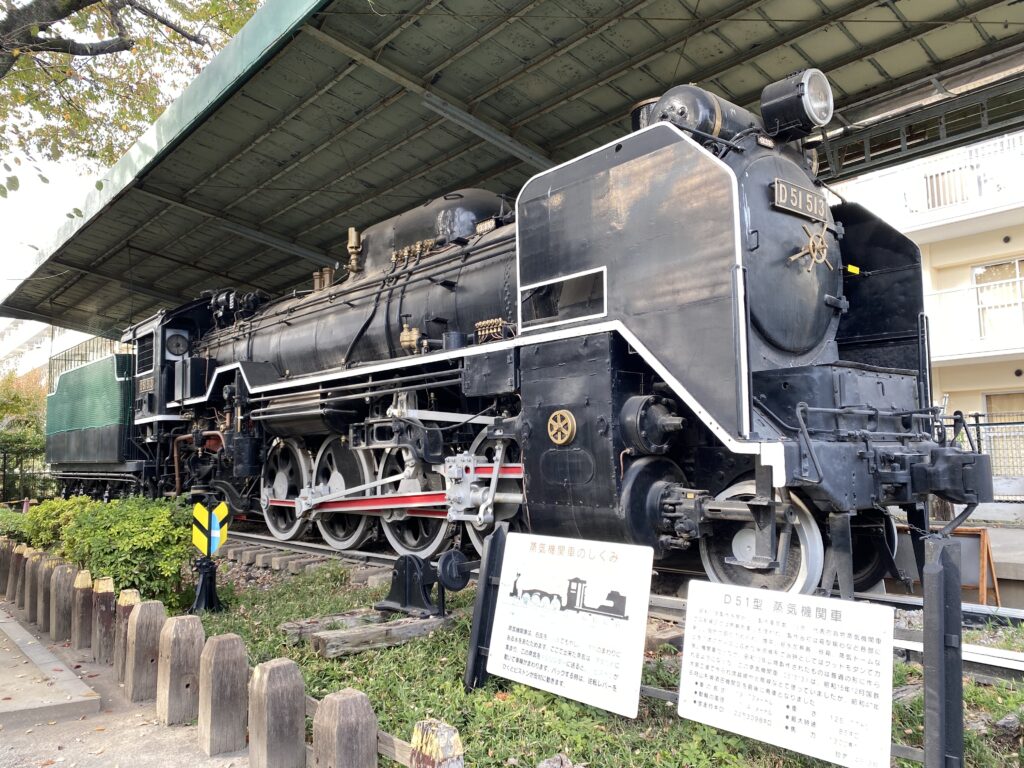
Also on display is a Tobu Railway locomotive No. 1, which was originally used in Wakayama Prefecture and acquired by Tobu Railway, but it was too small to be used in urban areas, so it was displayed at Tokiwadai Station on the Tojo Line, then it was transferred here. It was manufactured by Orenstein & Koppel OHG of Germany in 1902. The locomotive is surprisingly small and looks like a steam locomotive at an amusement park with a child on board. It is a rare vehicle with historical value, and it is worth a visit as it has been carefully maintained, including the paint job.
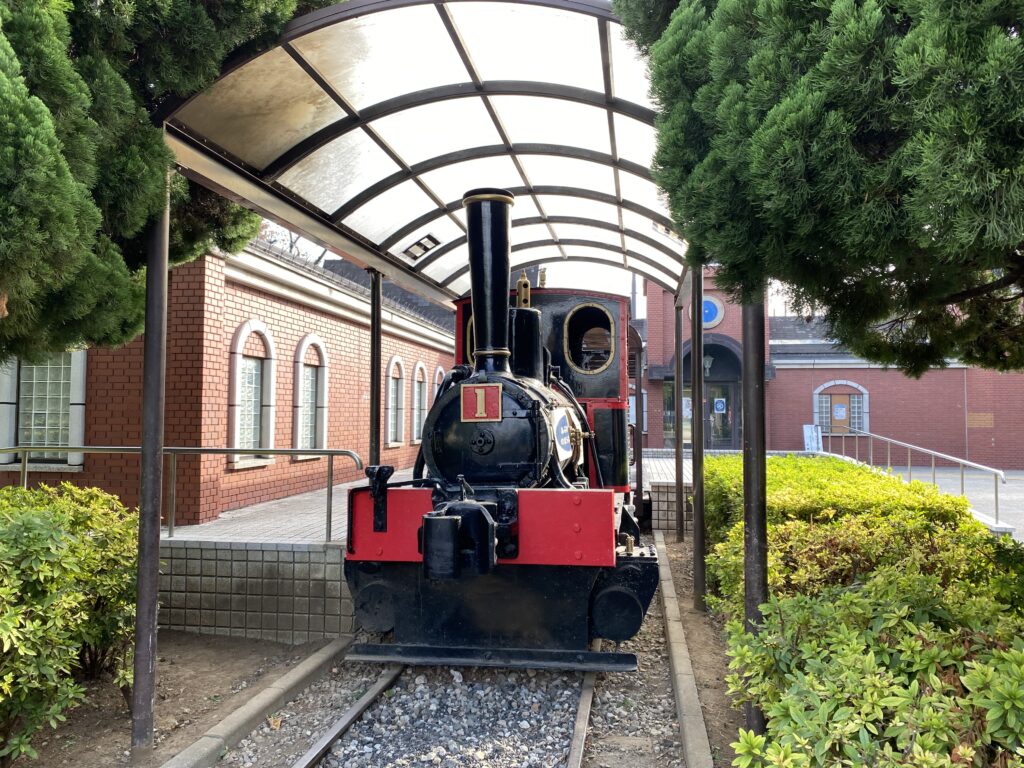
There is also a transportation museum in the park that can be visited free of charge (only in Japanese language). The museum displays a wealth of train models, valuable railway documents, and photos, and, amazingly, it is free to visit. We spent at least an hour in the museum, along with the steam locomotives. Demonstration of model trains run three times a day. The museum opens from 9:00 am to 4:00 pm.
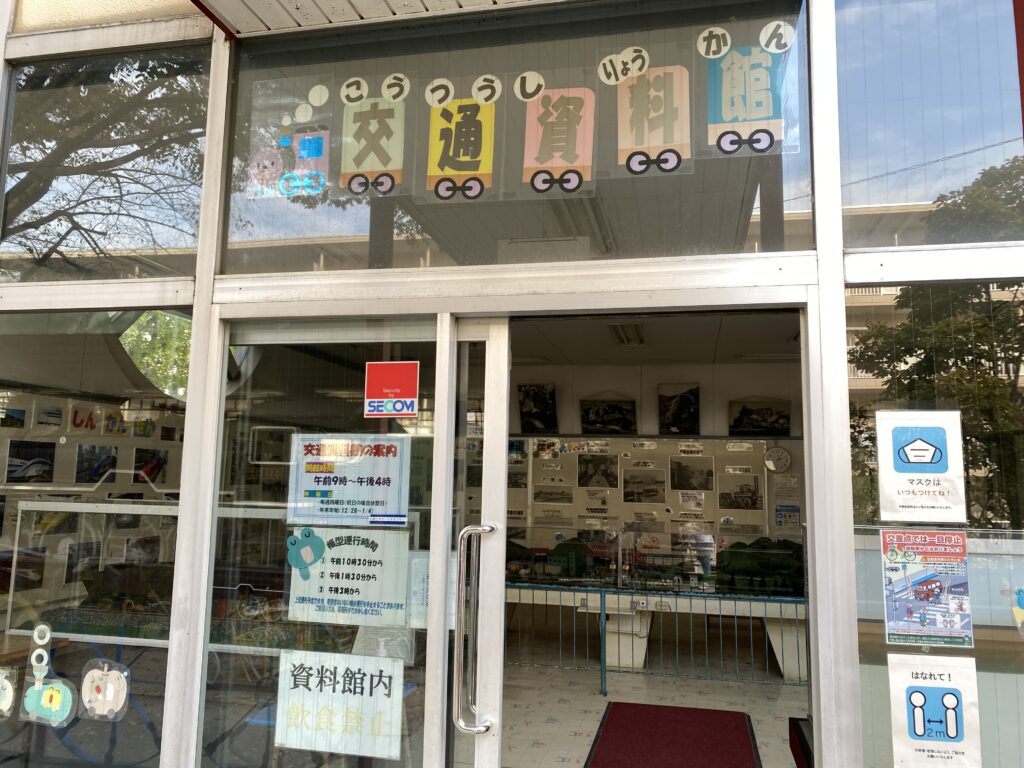
| access | A 5-minute walk from Hasune station on the Toei Mita line |
| locomotive on display | D51 513 locomotive (tender) Tobu Railway No.1 locomotive (tank) |
In addition to the valuable locomotives, an old Toei bus car was also on display in the park. This is a spot where not only children but also adults can enjoy themselves. You can also take a bus from Akabane Station.
[Katsushika Ward] Kamichiba-Sunahara Park/ Class D51 locomotive
A Class D51 502 locomotive is on display at Kamichiba-Sunahara Park in Katsushika Ward, Tokyo. This Class D51 was built in 1941 and assigned to the Nara engine depot. After that, it moved to Hiroshima, Shin-Tsurumi, Niitsu, and Naoetsu, and finally retired at Sakata engine depot and came to Katsushika Ward.

It is roofed and well-preserved, reminding us of the time when it was active.
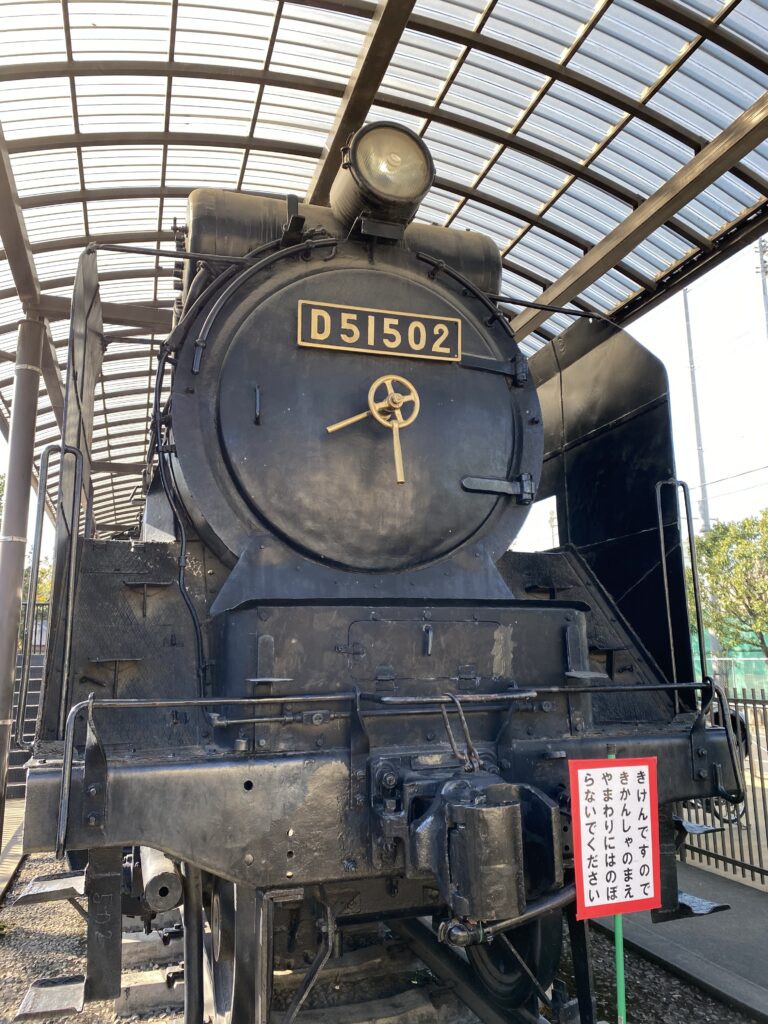
The park also has a free zoo and even offers pony rides. Adorable birds, squirrel monkeys, peacocks, goats, and pigs are kept here.
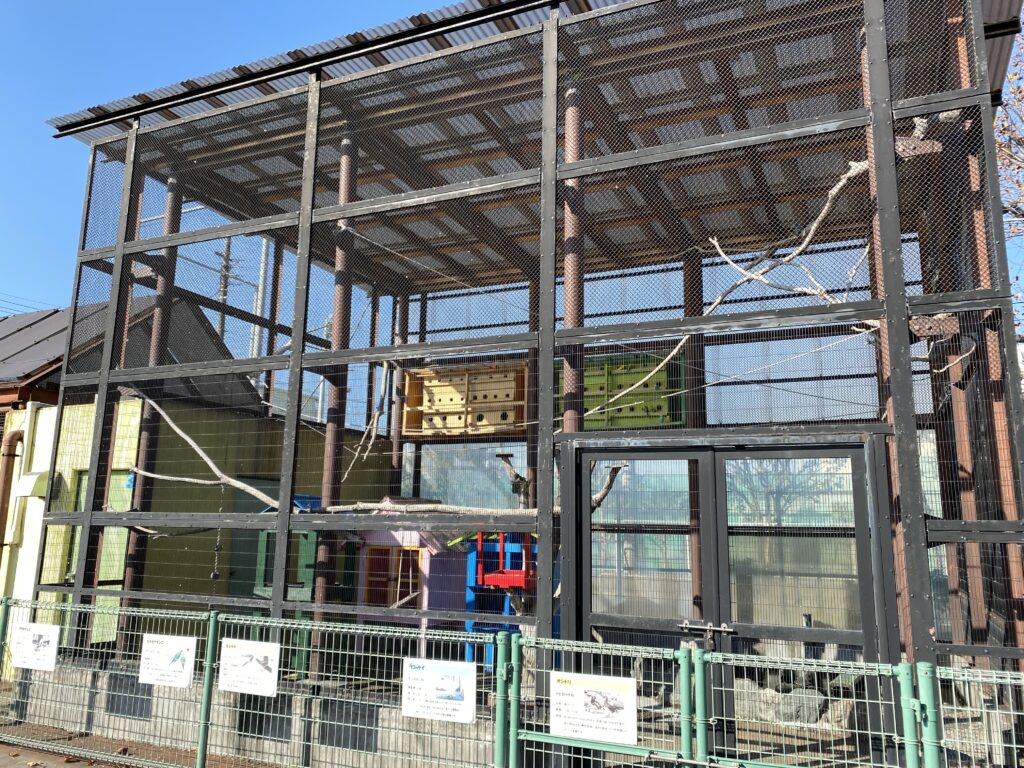
| access | Bus from Kameari station on the Joban line and Ayase station on the Tokyo Metro Chiyoda line |
| locomotive on display | D51 502 locomotive (tender) |
We took the Keisei Town Bus from Ayase Station to this park. After visiting the steam locomotive, we were able to spend some time in the zoo, and it is amazing that you can see so many animals and even ride a pony for free within Tokyo’s 23 wards. It is a park worth visiting even if you are not a resident of the neighborhood.
See also
The Railway Museum (Omiya)
The Railway Museum, one of the largest railway museums in Japan, is located in Omiya, Saitama Prefecture. The Railway Museum exhibits many valuable rolling stock from the first steam locomotives to the latest Shinkansen bullet trains, all of which are part of Japan’s railway history. Old passenger coaches, the famous Series 0 Shinkansen, and Imperial cars for the royal family are all worth a viewing. In addition, visitors can experience a Class D51 locomotive simulator, watch model train demonstrations, and dine at the restaurant, making for a full day of fun. Omiya is known as a town of railways.
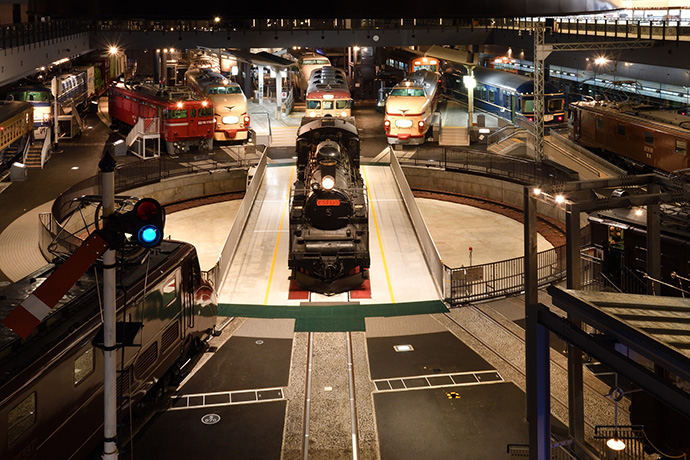
| access | From Omiya Station, take the Saitama New City Transit “New Shuttle” and get off at Railway Museum Station(two minutes). |
| opening hours | 10:00~17:00 Closed: Every Tuesday, New Year’s holiday |
| admission fee | At-the-door tickets Adult: 1,600 yen Elementary, Junior High, and High School Students: 600 yen Children (Preschool children 3 years and older): 300 yen Advance tickets (up to one day before) Adult: 1,500 yen Elementary, Junior High, and High School Students: 500 yen Children (Preschool children 3 years and older): 200 yen |
| more details | The Railway Museum |
Ride on currently operating steam locomotives
Several steam locomotives are currently operating for tourists in the Tokyo metropolitan area. Those trains faithfully reproduce the atmosphere of the past and run in scenic areas. It is a good opportunity to experience Japan’s steam locomotives for yourself.
Tobu Railway “SL Taiju”
Tobu Railway operates the “SL Taiju” in the Nikko and Kinugawa areas, which are famous tourist destinations. The steam locomotives used for “SL Taiju” are Class C11 locomotives, with three cars in the fleet: C11 207, C11 325, and C11 123.
“SL Taiju” operates with a six-car train consisting of a steam locomotive, a caboose, three passenger cars, and a diesel locomotive in the rear. This train allows passengers to travel by steam locomotive through the beautiful Nikko and Kinugawa areas, which are registered as World Heritage sites.
For details and reservations, click here.

| access | take the Tobu Nikko line from Asakusa, Shinjuku, or Kita-Senju and get off at Shimo-Imaichi station |
| locomotives to board | C11 207, C11 325, and C11 123 locomotives (tank) |
Chichibu Railway “SL PALEO EXPRESS”
“SL PALEO EXPRESS”, operated by Chichibu Railway in Saitama Prefecture, is the closest steam locomotive ride from Tokyo. It operates from Kumagaya Station on the Joetsu Shinkansen and JR Takasaki lines to the Chichibu area with its beautiful valleys.
The locomotive is the Class C58 363 locomotive, which was built in 1944 and served mainly in the Tohoku region before retiring in 1972 and being preserved at an elementary school in Saitama Prefecture. It was later put back into service with Chichibu Railway in 1988 and runs with 4 coaches coupled together.
In the Chichibu area, visitors can enjoy mountain climbing, hot springs, rafting, and other activities.
For details and reservations, click here.
| access | take the Joetsu Shinkansen, the Ueno-Tohoku line, the Shonan-Shinjuku line, or the Takasaki line and get off at Kumagaya station |
| locomotive to board | C58 363 locomotive (tender) |
JR EAST “SL Gunma Minakami /SL Gunma Yokokawa “
In Gunma Prefecture, JR East operates “SL Gunma”. There are two routes from Takasaki Station on the Joetsu and Hokuriku Shinkansen, to the hot spring resort of Minakami and the mountain pass town of Yokokawa, depending on the day.
They have two locomotives, which are a Class D51 locomotive and a Class C61 locomotive – the Class C61 is a large tender steam locomotive for passenger express trains and is rare, with only four locomotives still in existence. There are also two types of coaches, the so-called ‘old coaches’ and the Series 12 coaches, both of which are very popular.
For details and reservations, click here.
| access | Take the Joetsu/ Hokuriku Shinkansen or the Takasaki line and get off at Takasaki station |
| locomotives to board | Class D51 locomotive (tender) Class C61 locomotive (tender) |
Moka Railway “SL Moka”
The Moka Railway, which runs through Ibaraki and Tochigi prefectures, operates the “SL Moka”. The locomotive used is a Class C12 66 locomotive, which was built in 1933 and served Kagoshima, Iwate, Aomori, and Nagano. It was retired in 1972 and was preserved in Fukushima Prefecture, but was restored by Moka Railway in 1994. The Class C12 locomotive is a small locomotive for local lines and is currently operated only on the Moka Railway, with three passenger cars.
There is also a steam locomotive exhibition facility at Moka Station, where a JNR Class 9600 steam locomotive and a CLass D51 locomotive are on display. Along the Moka Railway line, you can enjoy Twin Ring Motegi, which is Honda’s motorsports circuit, Honda’s museum, and a city famous for its pottery called the Mashiko ware.
That train departs from Shimodate Station. There are two ways to get to Shimodate Station; one is to take the Tsukuba Express (TX) train from Akihabara, Asakusa, or Kita-Senju Station and transfer to the Kanto Railway at Moriya Station, and the other is to take the Tohoku Shinkansen and transfer to the JR Mito Line at Oyama Station.
For details and reservations, click here(Japanese only).

| access | -take the Tsukuba Express (TX) train from Akihabara, Asakusa, or Kita-Senju station and transfer to the Kanto Railway at Moriya station, then get off at Shimodate station. -take the Tohoku Shinkansen and transfer to the JR Mito line at Oyama station, then get off at Shimodate station. |
| locomotive to board | Class C12 66 locomotive (tank) |
For railway enthusiasts, it is fun to visit railroads around the world. Japan has a variety of unique railways, and you can find the steam locomotives are also a familiar sight. This site is limited to the Tokyo metropolitan area, but there are many steam locomotive exhibits, railway museums, and active steam locomotives in operation throughout Japan. Please enjoy Japan through the railways.
